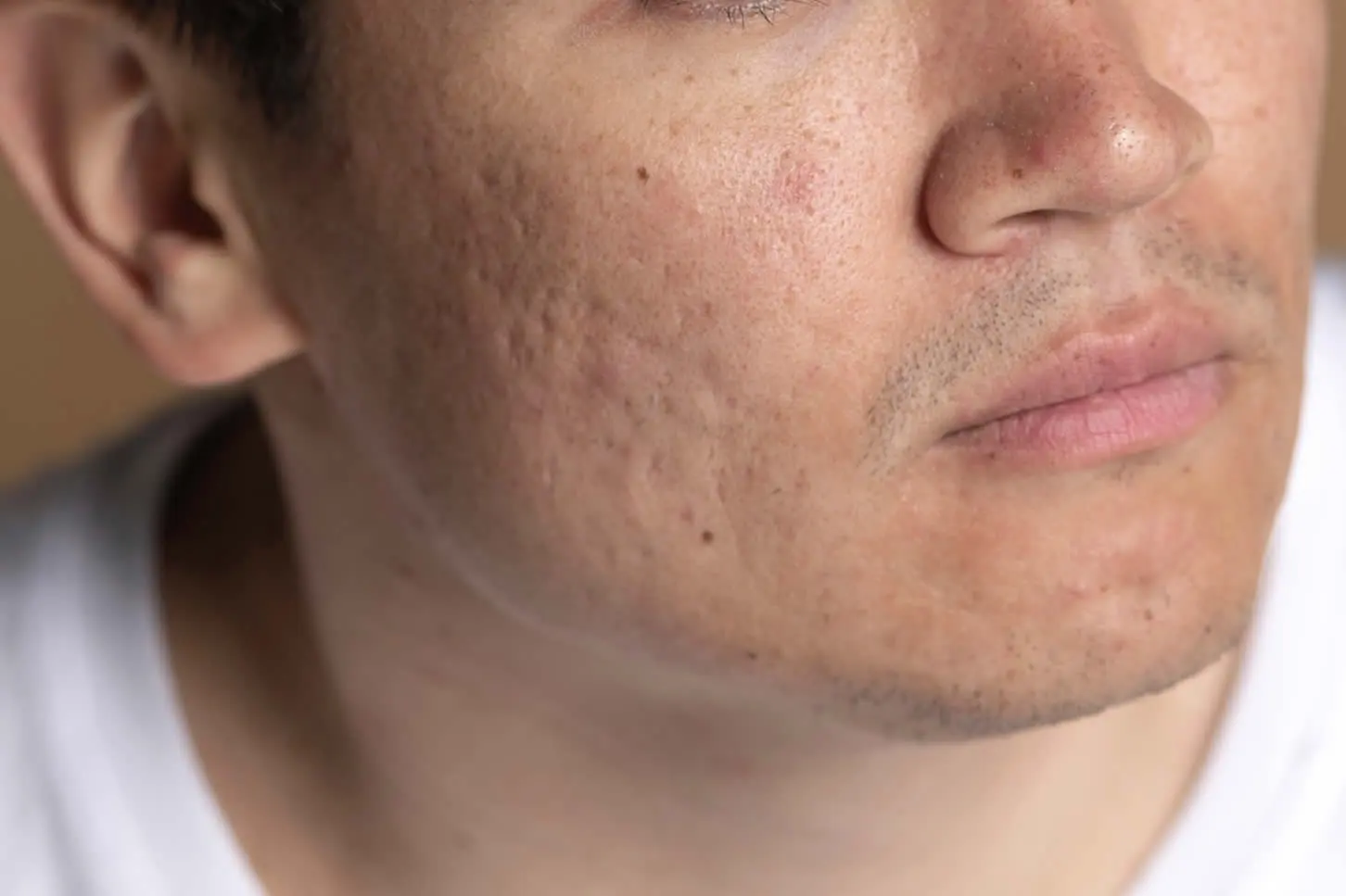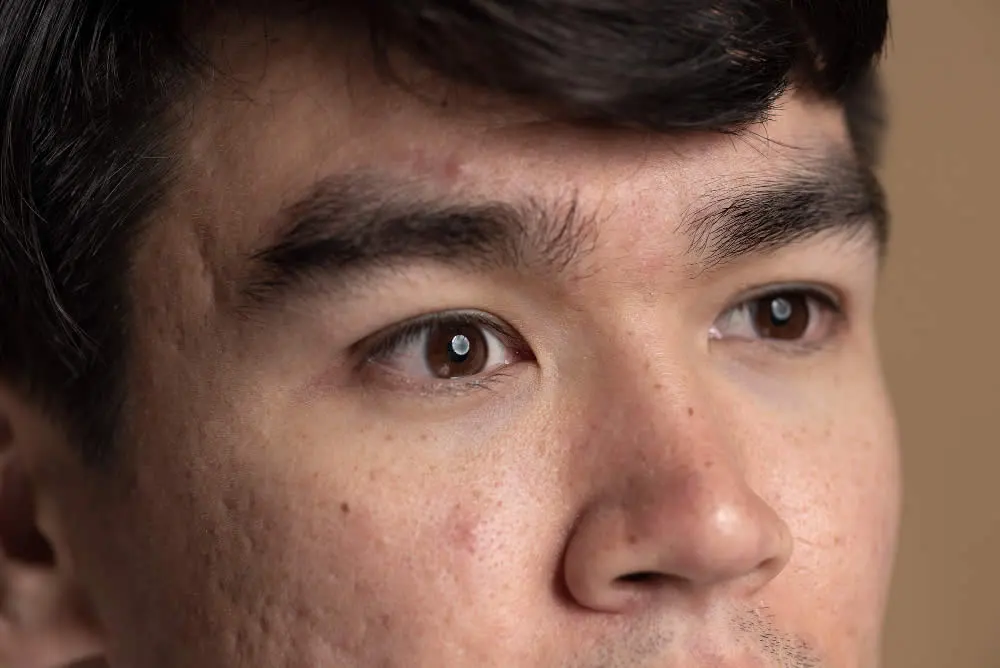What is Subscsion?
Subcision is a procedure specially designed for deep scars, surpassing the depth that lasers or other treatments can achieve. Safe and effective, this treatment targets acne scars on various parts of the body. It employs a Nokor syringe, a fine needle with a cutting edge, to sever the rigid collagen or adhesions that cause the skin to be tugged downwards. This not only releases the tethered skin but also boosts the skin’s production of collagen and elastin, the vital proteins responsible for maintaining skin’s firmness and vitality. The outcome? A radiant, healthier-looking skin.

Who is a good candidate for Subscision?
For those struggling with moderate to severe acne scars, finding a treatments can be challenging. Subcision can be an option to reduce the appearance of scars. This minimally invasive procedure is tailored specifically for those who bear the remnants of past acne breakouts and are seeking a safe, yet impactful option. Unlike aggressive surgical options or treatments that may not delve deep enough, Subcision provides a balanced approach.
By targeting the root causes of skin indentations and scars, it offers noticeable improvements without the risks of more invasive procedures.
How does it work?
Subscision works by breaking up the fibrous bands or tethers that can pull the skin down and create depressions or indentations in the skin’s surface.
Here’s how subcision for acne scars works:
Anesthesia: The procedure typically starts with the application of a local anesthetic to numb the treatment area. This ensures that you don’t feel any pain during the procedure.
Needling: Once the area is numb, the dermatologist uses a specialized needle to carefully insert it beneath the surface of the skin. Then the dermatologist moves the needle back and forth to gently break up the fibrous bands or scar tissue responsible for creating the depressions.
Release of Tethers: As the needle moves, it releases the tethers or bands that are pulling the skin down, allowing the skin to lift and fill in the scarred area.
Stimulation of Collagen: The process of inserting the needle also stimulates the production of collagen, a protein that helps improve skin’s texture and firmness. This collagen production helps in further smoothing out the treated area over time.
Recovery: After the procedure, you may experience some swelling, bruising, and redness in the treated area. This is normal and usually subsides within a few days to a week. You can typically return to your regular activities relatively quickly.
Subcision is often used for treating rolling or atrophic acne scars, which are characterized by broad, shallow depressions in the skin. It can be performed as a standalone treatment or in combination with other acne scar treatments like laser therapy or chemical peels for more comprehensive results.
What are the results of Subscision?
Following a subcision procedure, there’s a notable diminution in the prominence of acne scars, enhancing the skin’s texture and restoring volume. Subcision stands out as a safe, simple technique that yields substantial long-term amelioration in the ‘rolling scars’. Moreover, this method can seamlessly integrate with other acne scar remedies for heightened outcomes.
Optimal results from subcision usually necessitate multiple sessions. The number of treatments hinges on the intensity of the scars and the individual’s healing ability, with most patients undergoing three to six sessions. It’s advisable to allow a minimum of four weeks between consecutive treatments.
While subcision delivers considerable enhancements in the appearance of acne scars, it’s essential to note that it doesn’t eradicate them. Subcision is often paired with platelet-rich plasma. Furthermore, combining subcision with other acne scar interventions, such as microneedling and laser therapy, can be beneficial.
Does Subscision have any downtime?
Following a subcision procedure, it’s common for patients to encounter some side effects in the treated region, such as pain, swelling, or bruising. Generally, these symptoms wane after one to two weeks. Over-the-counter anti-inflammatory medications can be beneficial for those seeking to alleviate discomfort or swelling.
While makeup can be used to camouflage any bruising, patients are advised to factor in 1-2 weeks to fully allow swelling and bruising to subside, ensuring they’re prepared for any social engagements. It’s worth noting that most those who undergo subcision report significant swelling and some bruising but typically find themselves resuming normal social activities within a week post-treatment.

FAQ About Subscision
Is there any aftercare I should be aware of post-procedure?
While some general recommendations include avoiding direct sun exposure and not picking at the treated area, your dermatollogist will provide specific aftercare instructions tailored to your treatment.
How long should I wait between Subscision sessions?
It’s generally advised to wait at least four weeks between treatments, but this can vary depending on individual healing rates and DrName’s recommendations.
Can Subscision be combined with other treatments?
Yes, it can be combined with other treatments like platelet-rich plasma, microneedling, and laser therapy. Discuss with DrName to understand the best combination for your skin type and concerns.
Is the procedure painful?
Some discomfort might be felt during the procedure, and pain, swelling, or bruising afterward.
Is there a dermatologist near me in Irving that offers Subscision?
Yes. At our Irving dermatology office we offer Subscision to patients from Irving and the surrounding area. Contact our office today to schedule an appointment.

